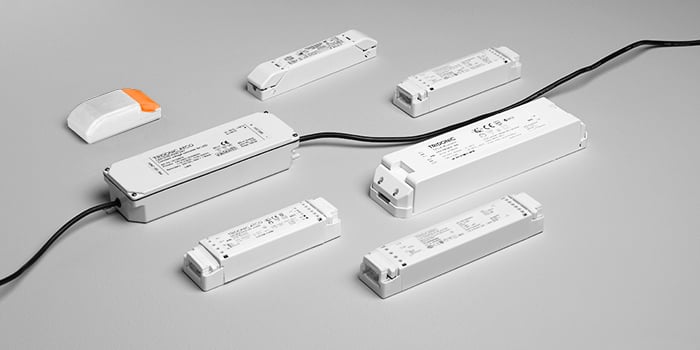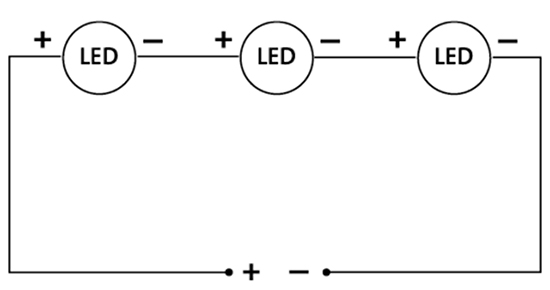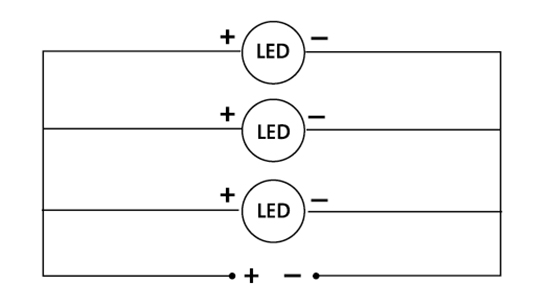
Ballasts
The operation of LEDs or LED modules requires specially adapted ballasts, often referred to as drivers.

These convert 230 V mains voltage to the appropriate values for the operation of the component. It is important that the ballast is both designed and approved for the operation of LEDs. Although some LEDs can be driven by conventional transformers, these can lack various protective measures, such as protection against short-circuiting, which can cause personal injury. Most custom ballasts are also designed as SELV, which ensures the LED or parts of the luminaire do not need to be protected against touch.
There are essentially two different forms of operation of LED modules/luminaires: constant current or constant voltage.
For constant current operation, connected LEDs are connected to the ballast in series.
Constant current is when connected diodes are driven by a constant current, which is normally 350, 500, 700 or 1050 mA. The voltage of the circuit depends on the number of series-connected diodes. Each diode has a forward voltage, and with series connection this forward voltage is added, corresponding to the number of diodes
A downlight with 3 diodes, designed to be operated by a ballast with constant power, has a secondary voltage of about 9 V DC (3⊗3 V). If several luminaires are connected in series to a common ballast, the voltage may be multiplied by the number of luminaires.
SELV limit in EN 60598-1 (luminaire standard): For IP 20 luminaires, a max. of 60 V DC applies, and for luminaires with an enclosure class higher than IP 20, 30 V DC applies. This applies in cases where the diodes can be touched. If they are protected, the permitted voltage is 120 V DC. The certification of the luminaire and the recommended ballasts must, however, be taken into consideration.

For constant voltage, connected LEDs are connected to the ballast in parallel.
Constant voltage is normally used for LED products with a large number of diodes, e.g. LED strips and LED products featuring a luminous line function. The constant voltage is usually 8, 10, 12, 24 or 48 V DC. A number of LED products can be connected in parallel to a common ballast, provided this can manage the connected load. The voltage drop in cables has to be taken into account. This is calculated in the same way as for traditional extra-low voltage installations.
Irrespective of the type of operation, it is important that the ballast should be matched correctly to the type of LED luminaire to be powered. The polarity is also important as it is a direct current (DC). An inappropriately selected or engaged ballast can damage or destroy connected LED luminaires.
Light regulation
There are two types of dimming technologies, Amplitude Modulation or Pulse Width Modulation. Amplitude Modulation, AM, is about reducing the drive current to the LED.
With Pulse Width Modulation, PWM, the current level to the LED is constant but pulsed with high frequency, which gives the appearance of a reduced light level.
Fagerhult uses Amplitude Modulation in most products with the exception of some Tunable White products. We expect that, by the end of 2018, all products will be controlled by Amplitude Modulation.